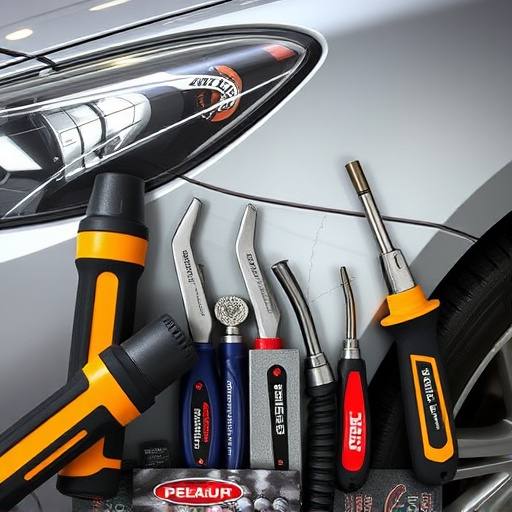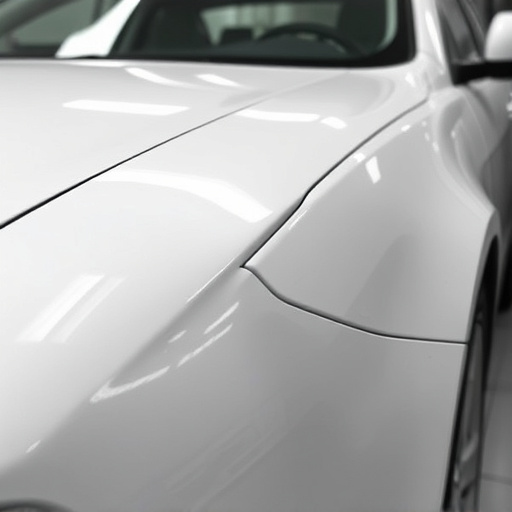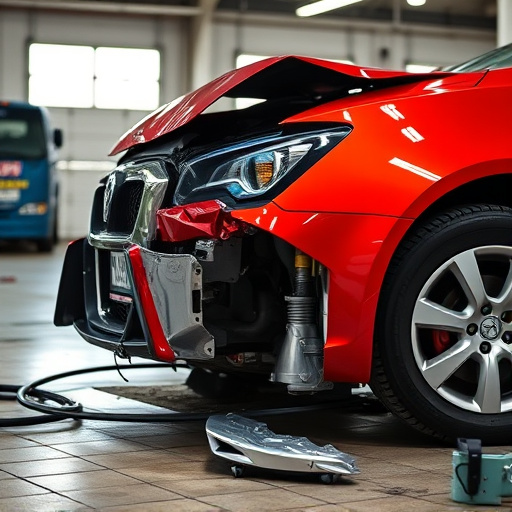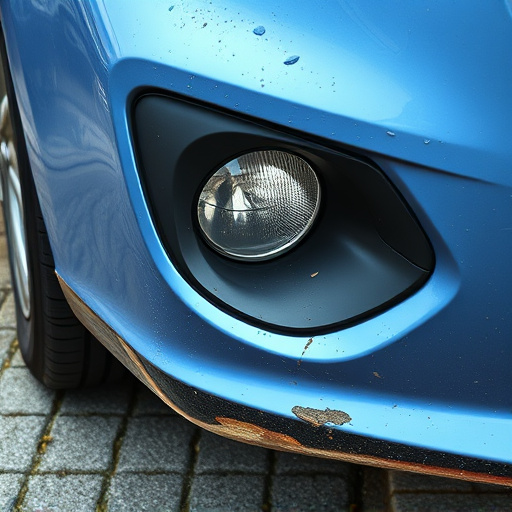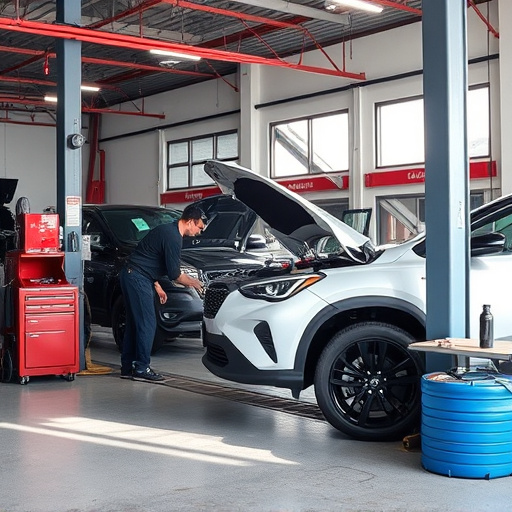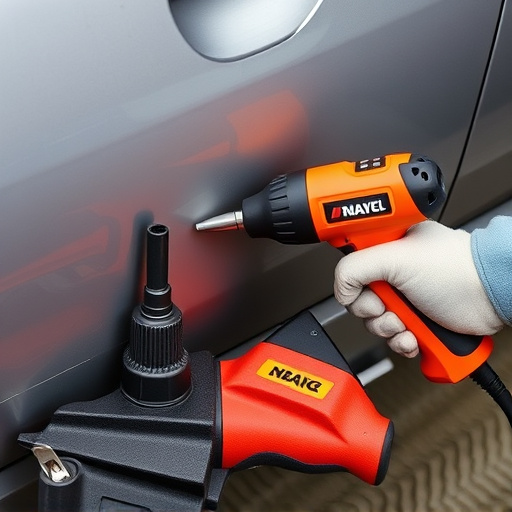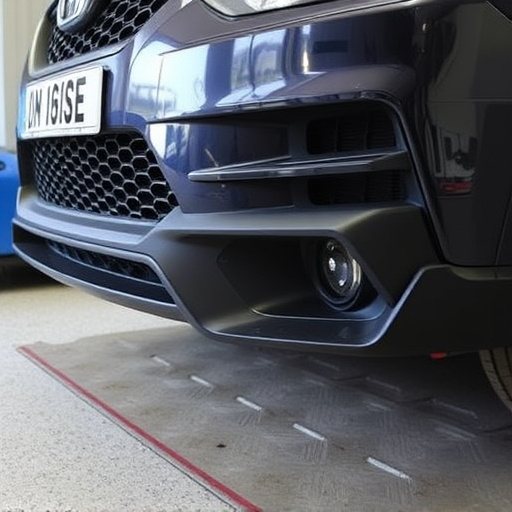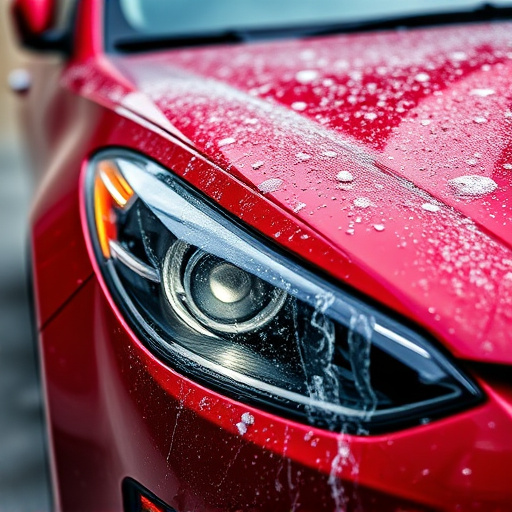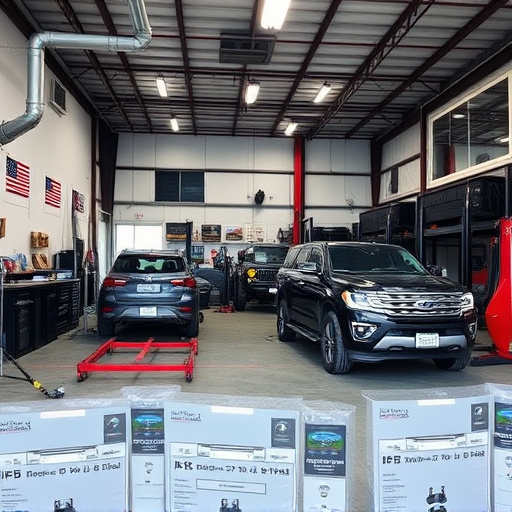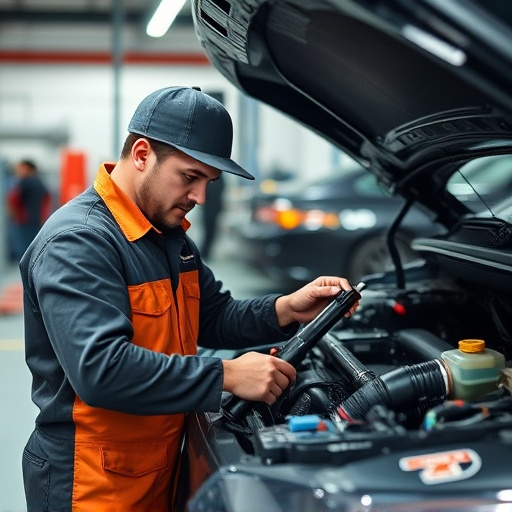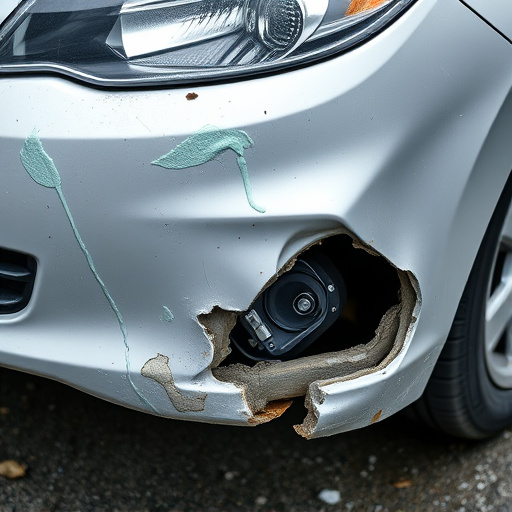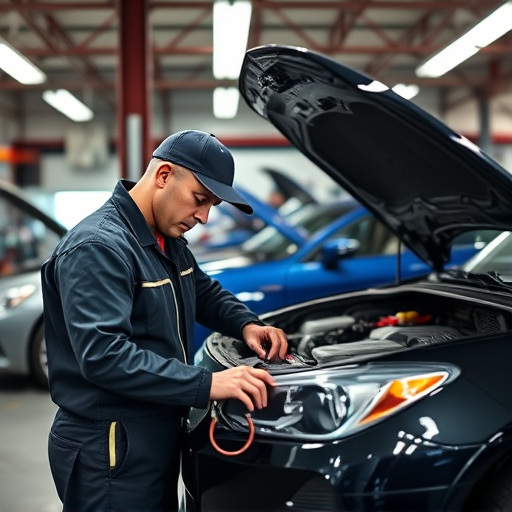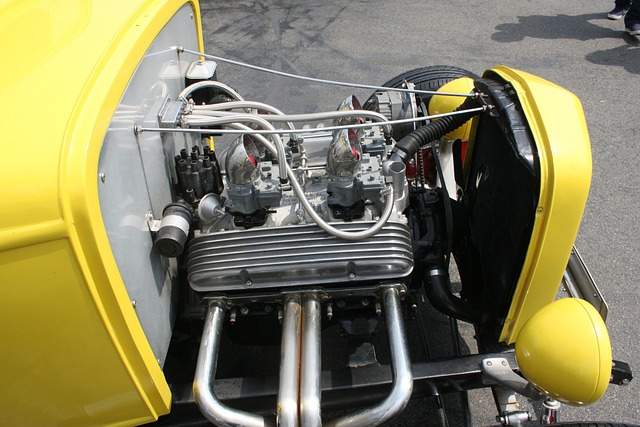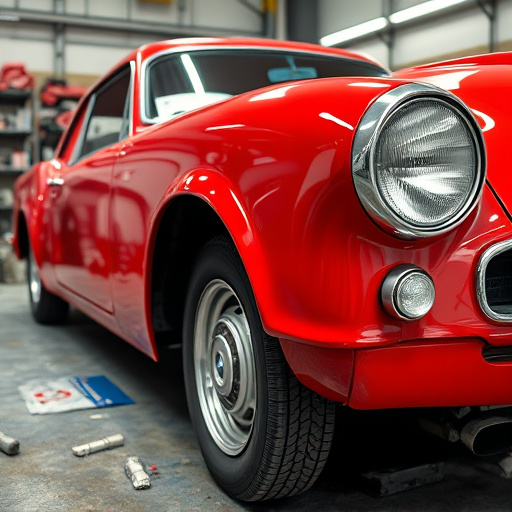TIG welding collision systems, powered by advanced sensors, AI, and CNC technology, revolutionize automotive repair. They ensure precise control over welds, minimize defects, speed up turnaround times, reduce waste, and preserve vehicle aesthetics, making them crucial for modern collision centers and fleet services. These systems automate processes, enhance efficiency, and accuracy, resulting in longer-lasting, more visually appealing repairs with fewer rework requirements.
In the realm of modern manufacturing, TIG welding collision systems stand as game-changers, enhancing safety and efficiency. This article delves into the intricate technology driving these innovative systems, specifically focusing on collision detection within TIG welding processes. We explore core technologies powering their advanced capabilities, highlighting how these systems revolutionize bustling industrial landscapes. By understanding and implementing these solutions, manufacturers can achieve remarkable results, ensuring precise welds while mitigating risks in today’s competitive market.
- Understanding TIG Welding Collision Detection
- Core Technologies Powering Modern Systems
- Enhancing Safety and Efficiency through Implementation
Understanding TIG Welding Collision Detection
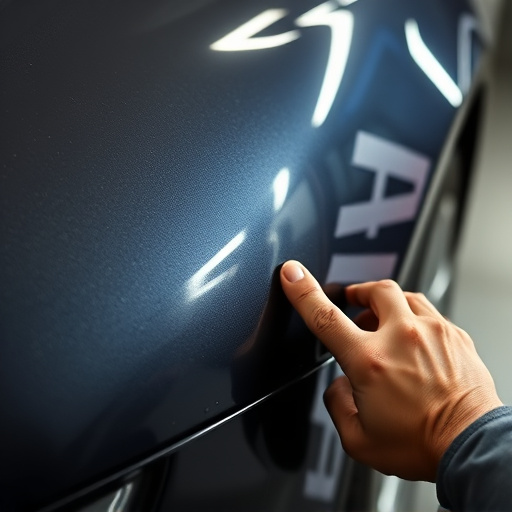
TIG welding collision detection is a sophisticated system designed to enhance safety and precision in automotive manufacturing and repair processes. It utilizes advanced sensors and computer-aided algorithms to monitor and analyze the weld pool, arc geometry, and material properties during the TIG (Tungsten Inert Gas) welding process. This technology detects potential collisions or misalignments in real time, allowing for immediate adjustments to ensure a strong, structurally sound bond.
In the realm of car body restoration and Mercedes-Benz collision repair, these collision systems play a pivotal role. By precisely measuring and controlling the welding parameters, they minimize the risk of defects like burn-through, uneven fusion, or weak welds, which are common issues in complex metal fabrication tasks. Collision detection not only streamlines the workflow at collision centers but also contributes to improved overall quality, faster turnaround times, and reduced material waste.
Core Technologies Powering Modern Systems
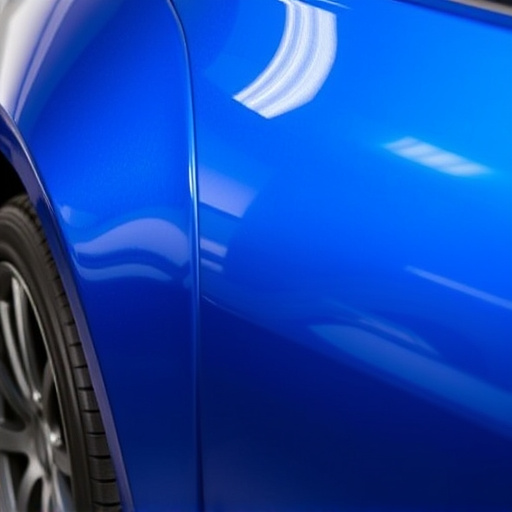
The core technologies powering modern TIG welding collision systems have evolved significantly, revolutionizing the automotive repair landscape. These advanced systems incorporate robust sensors, sophisticated software algorithms, and precise robotic arms to achieve unparalleled accuracy in collision damage repair. The integration of Computer Numerical Control (CNC) technology allows for highly customized repairs, ensuring that each vehicle is restored to its original specifications, be it a classic Mercedes-Benz or any other make.
Artificial Intelligence (AI) and Machine Learning play a pivotal role in enhancing the efficiency and effectiveness of these systems. By analyzing vast datasets of collision scenarios, AI algorithms can predict and adapt to various repair challenges, resulting in faster and more efficient auto painting processes. This not only reduces labor costs but also ensures that every repair is executed with meticulous precision, maintaining the integrity and aesthetics of the vehicle, regardless of its complexity or age.
Enhancing Safety and Efficiency through Implementation
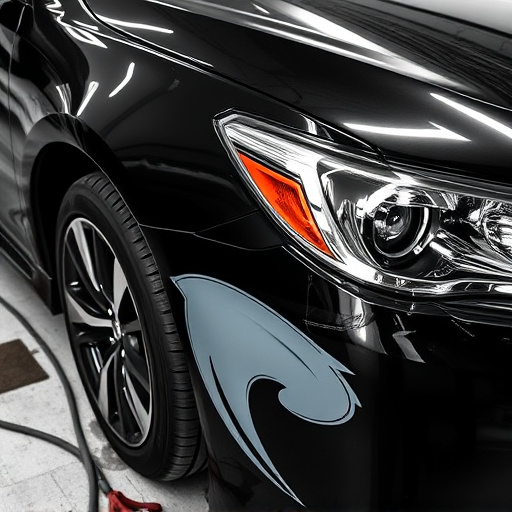
The implementation of modern TIG welding collision systems has significantly enhanced safety and efficiency in automotive collision repair. These advanced systems employ sophisticated sensors and computer-aided technologies to accurately detect and measure collision damage, enabling precise repairs that match original equipment standards. By automating certain aspects of the repair process, fleet repair services can reduce human error and improve turnaround times, thereby increasing productivity and customer satisfaction.
Moreover, TIG welding collision systems minimize the risk of secondary damage often associated with manual welding techniques, such as fender benders. The precision and control offered by these systems ensure that repairs are executed with meticulous care, preserving the integrity and aesthetic appeal of vehicles. This not only reduces the need for costly rework but also contributes to longer-lasting and more visually pleasing automotive collision repair outcomes.
Modern TIG welding collision systems, powered by advanced technologies like real-time sensors, machine learning algorithms, and robust control mechanisms, are revolutionizing the welding industry. These innovative systems significantly enhance safety by detecting and mitigating potential collisions, while optimizing efficiency through precise control and reduced downtime. By integrating these cutting-edge technologies, welders can achieve higher productivity, improved quality, and a safer working environment, solidifying the role of TIG welding collision systems as a game-changer in today’s industrial landscape.
